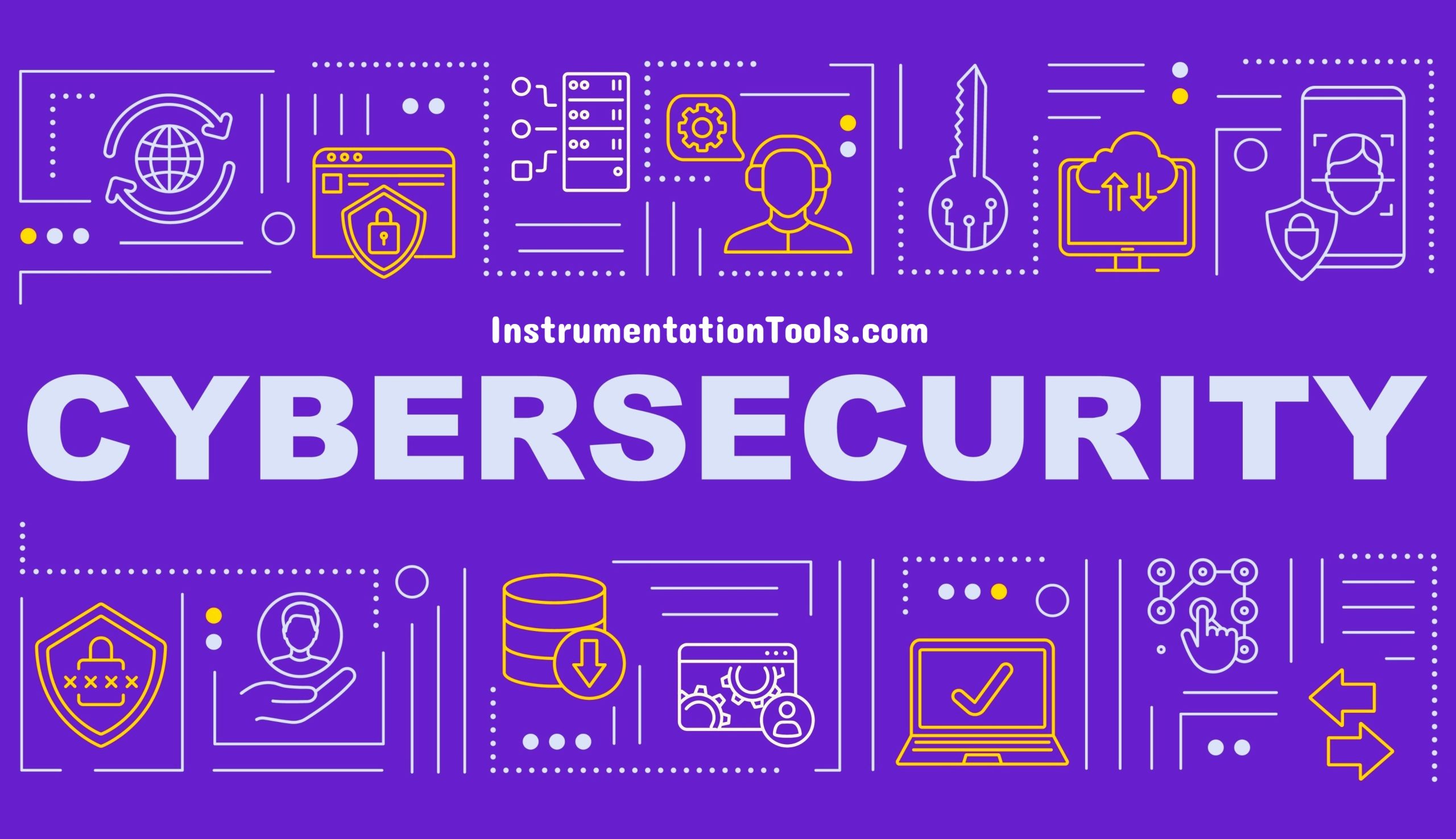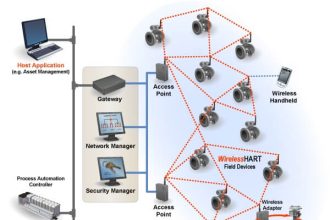Cybersecurity is an ever-evolving field, essential for protecting information and systems from cyber threats. These cybersecurity projects can provide practical experience in understanding and combating various types of cyber attacks.
Cybersecurity Projects

These projects will cover a broad range of topics, including network security, encryption, web security, ethical hacking, and digital forensics, offering students a basic view of the cybersecurity landscape.
- Network Intrusion Detection System (NIDS): Develop a NIDS to monitor network traffic and detect suspicious activities, using machine learning or rule-based algorithms.
- Implementation of Cryptographic Algorithms: Create a project that involves implementing various cryptographic algorithms like RSA, AES, or DES in a programming language.
- Penetration Testing of a Web Application: Conduct a penetration test on a web application to identify and exploit vulnerabilities, learning about common web security issues.
- Phishing Detection System: Develop a system that uses machine learning or heuristics to detect phishing emails or websites, critical for email security.
- Firewall Development Project: Create a basic firewall application that filters incoming and outgoing network traffic based on predefined rules.
- Secure File Transfer Protocol Implementation: Develop a secure file transfer protocol that ensures data integrity and confidentiality during transmission.
- Cybersecurity Awareness Campaign: Create a project that focuses on educating people about cybersecurity best practices and common threats.
- Wi-Fi Security Analysis: Analyze Wi-Fi security protocols like WPA2 or WPA3 and demonstrate potential vulnerabilities and improvements.
- Blockchain-Based Secure Voting System: Develop a voting system using blockchain technology to ensure transparency and tamper-proof records.
- Mobile Application Security Assessment: Perform a security assessment of a mobile application to identify vulnerabilities and propose mitigation strategies.
- Cybersecurity Incident Response Tool: Create a tool to assist in managing and responding to cybersecurity incidents, incorporating threat intelligence and automated responses.
- Digital Forensics Toolkit: Develop a digital forensics toolkit that helps in analyzing cyber crimes and gathering digital evidence.
- DNS Security Extension (DNSSEC) Implementation: Implement DNSSEC to protect DNS queries and ensure the integrity of responses.
- Biometric Authentication System: Develop a system that uses biometric data like fingerprints or facial recognition for secure authentication.
- Security Policy Compliance Checker: Create a tool that checks an organization’s IT infrastructure for compliance with security policies and standards.
- Malware Analysis and Detection System: Develop a system for analyzing and detecting malware based on behavior or signature patterns.
- Secure Chat Application: Create a chat application with end-to-end encryption, ensuring privacy and security in communications.
- Password Manager with Enhanced Security Features: Develop a password manager with features like two-factor authentication and secure password generation.
- Automated Vulnerability Scanner: Create an automated tool that scans networks or applications for known vulnerabilities.
- Anomaly-Based Intrusion Detection System: Implement an intrusion detection system that uses machine learning to detect anomalies in network behavior.
- IoT Device Security Analysis: Perform a security analysis on IoT devices, identifying vulnerabilities and proposing mitigation strategies.
- Development of a Secure Web Gateway: Create a secure web gateway to monitor and control web traffic, preventing access to malicious websites.
- Ethical Hacking Workshop: Organize a workshop or series of challenges that teach ethical hacking skills and best practices.
- Ransomware Simulation and Response Plan: Develop a simulation of a ransomware attack and create a response plan to mitigate the impact.
- Implementation of a Zero Trust Architecture: Design and implement a network architecture based on the zero trust model, focusing on strict identity verification.
- Cloud Security Assessment Tool: Create a tool that assesses the security of cloud-based services and provides recommendations for improvement.
- Data Privacy Compliance Checker: Develop a system that checks if an organization’s data handling practices comply with data privacy laws like GDPR or CCPA.
- Cybersecurity Risk Assessment Framework: Create a framework for assessing cybersecurity risks in an organization, considering various threat vectors and vulnerabilities.
- Security Information and Event Management (SIEM) Tool: Implement a SIEM tool that aggregates and analyzes security logs from various sources.
- Anti-Phishing Browser Extension: Develop a browser extension that detects and warns users about phishing websites.
- Secure E-Commerce Transaction System: Create a secure system for handling e-commerce transactions, ensuring data security and fraud prevention.
- Development of a Cybersecurity Audit Tool: Develop a tool that conducts audits of an organization’s cybersecurity posture, checking for weaknesses and non-compliance.
- Automated SSL/TLS Checker: Create a tool that automatically checks websites for proper SSL/TLS configurations and certificate validity.
- Botnet Detection and Mitigation System: Implement a system to detect and mitigate botnet activities within a network.
- Cybersecurity Training Simulation: Develop a simulation environment for cybersecurity training, allowing users to practice responding to various cyber threats.
- Steganography Tool for Secure Communications: Create a tool that uses steganography to hide messages within images or other files for secure communication.
- Secure Online Voting System: Develop an online voting system with robust security measures to prevent tampering and ensure voter anonymity.
- Two-Factor Authentication System: Implement a two-factor authentication system for enhancing the security of login processes.
- Cybersecurity Threat Intelligence Platform: Create a platform that collects and analyzes data on emerging cybersecurity threats.
- Development of an IDS for Wireless Networks: Develop an Intrusion Detection System specifically for monitoring and securing wireless networks.
- Forensic Analysis of Network Traffic: Create a project that involves capturing and analyzing network traffic to identify malicious activities or policy violations.
- Automated Penetration Testing Framework: Implement a framework for automated penetration testing to regularly assess the security of IT systems.
- Secure Code Review Tool: Develop a tool that automates the process of reviewing code for security vulnerabilities.
- Privacy-Enhancing Browser: Create a web browser focused on enhancing user privacy, with features like tracker blocking and encrypted search.
- IoT Security Compliance Checker: Develop a tool that checks IoT devices for compliance with security best practices and standards.
- Dark Web Monitoring Tool: Develop a tool that monitors the dark web for stolen data or credentials related to an organization.
- Artificial Intelligence for Cyber Threat Detection: Implement an AI system that detects cyber threats by analyzing patterns and anomalies in data.
- Cybersecurity Policy Generator: Create a tool that helps organizations generate cybersecurity policies based on their specific needs and industry standards.
- Development of a Cybersecurity Dashboard: Build a dashboard that provides a real-time overview of an organization’s cybersecurity status, including threats, vulnerabilities, and incidents.
- Encryption Algorithm Optimization: Work on optimizing existing encryption algorithms for better performance and security.
- Blockchain for Secure Document Sharing: Implement a blockchain-based system for secure and tamper-proof document sharing.
- Automated Security Patch Deployment Tool: Develop a tool that automatically deploys security patches to software and systems.
- Email Security Analysis and Improvement Project: Analyze email systems for security vulnerabilities and develop improvements to enhance security.
- Development of a Cybersecurity Compliance Tracking System: Create a system that tracks an organization’s compliance with cybersecurity regulations and standards.
- Data Loss Prevention (DLP) System: Implement a DLP system to prevent sensitive data from unauthorized access or leaks.
- Network Segmentation for Enhanced Security: Develop a project that involves creating network segments to isolate critical systems and reduce the attack surface.
- Password Cracking and Defense Strategy: Study various password-cracking techniques and develop strategies to defend against them.
- Secure Cloud Storage System: Create a cloud storage system with enhanced security features, such as encryption and access controls.
- Cybersecurity Incident Simulation and Training: Develop a simulation environment for training individuals in responding to various cybersecurity incidents.
- Web Application Firewall (WAF) Development: Implement a WAF to protect web applications from common attacks like SQL injection and cross-site scripting (XSS).
- Development of a VPN Service: Create a VPN service that provides secure and private internet access.
- Secure Messaging App with End-to-End Encryption: Develop a messaging app that focuses on privacy and security through end-to-end encryption.
- IoT Security Framework Implementation: Implement a security framework specifically for IoT devices to address unique security challenges.
- Cybersecurity for Autonomous Vehicles: Develop a project focusing on the cybersecurity aspects of autonomous vehicles, addressing potential vulnerabilities.
- Smart Contract Security Analysis: Analyze and improve the security of smart contracts in blockchain applications.
- Development of an Anonymous Communication System: Create a system that allows users to communicate anonymously, focusing on privacy and security.
- Security Analysis of 5G Networks: Conduct a security analysis of 5G networks and propose enhancements to address identified vulnerabilities.
- Container Security Project: Focus on the security of containerized applications, analyzing and improving container management platforms like Docker or Kubernetes.
- Development of a Secure API Gateway: Implement a gateway that manages and secures API communications.
- Machine Learning for Fraud Detection: Use machine learning algorithms to detect fraudulent activities in financial transactions or online systems.
- Development of a Cybersecurity Knowledge Base: Create a comprehensive knowledge base that includes information on various cybersecurity threats, mitigation strategies, and best practices.
- Security Orchestration and Automated Response (SOAR) Tool: Implement a SOAR tool to automate the response to cybersecurity incidents, improving the efficiency of security operations.
- Cybersecurity for Smart Grid Systems: Develop a project focused on securing smart grid systems, addressing the unique challenges in energy distribution networks.
- Quantum Cryptography Research and Implementation: Explore quantum cryptography, implementing basic models to understand its potential in securing communications against quantum computing threats.
- Cybersecurity Training VR Simulation: Create a virtual reality simulation for cybersecurity training, providing an immersive learning experience in handling cyber threats.
- Social Engineering Awareness and Defense Strategies: Develop a program that educates users about social engineering tactics and how to defend against them.
- Development of a Secure Online Identity Verification System: Implement a system for secure online identity verification using techniques like facial recognition or digital IDs.
- Cybersecurity Challenge Platform: Create an online platform that hosts cybersecurity challenges and CTF (Capture The Flag) competitions for skill development.
- Secure Digital Voting System: Develop a secure digital voting system with robust measures to ensure the integrity and anonymity of votes.
- Development of a Cybersecurity Incident Forensics Toolkit: Create a toolkit that assists in the forensic analysis of cybersecurity incidents, helping to identify the cause and impact of breaches.
- Secure IoT Communication Protocol: Implement a secure communication protocol specifically designed for IoT devices to ensure data privacy and integrity.
- End-Point Protection System Development: Develop an end-point protection system that secures devices against malware, ransomware, and other threats.
- Automated Cybersecurity Audit Tool: Create a tool that automates the process of auditing an organization’s cybersecurity posture.
- Security Analysis of Wearable Devices: Conduct a security analysis of wearable devices, identifying vulnerabilities and proposing enhancements.
- Development of a Cybersecurity Risk Management Framework: Implement a framework for managing cybersecurity risks in an organization, including risk assessment, mitigation, and response strategies.
- Blockchain-Based Identity Management System: Develop an identity management system using blockchain to ensure secure and tamper-proof identity records.
- Cybersecurity for Healthcare Data: Focus on securing healthcare data, developing solutions to protect sensitive medical information and patient privacy.
- AI-Powered Threat Hunting Tool: Implement an AI-powered tool that proactively hunts for potential threats in an organization’s network.
- Secure Software Development Lifecycle (SDLC) Implementation: Create a project that integrates security practices throughout the software development lifecycle.
- Cybersecurity Awareness Mobile App: Develop a mobile application that educates users about cybersecurity awareness and safe online practices.
- Smart Home Security System: Implement a security system for smart homes, focusing on protecting IoT devices and home networks from cyber attacks.
- Development of a Cryptocurrency Security Solution: Create a solution that addresses the security challenges associated with cryptocurrency transactions and storage.
- Cybersecurity Policy Analysis and Recommendation Tool: Develop a tool that analyzes an organization’s cybersecurity policies and provides recommendations for improvement.
- Development of an Encrypted File Storage System: Create a system for storing files securely with robust encryption and access control mechanisms.
- Cybersecurity for E-Government Services: Focus on securing e-government services, and ensuring the confidentiality, integrity, and availability of government-related online services.
- Automated Phishing Attack Simulation and Training: Implement a system that simulates phishing attacks for training purposes, helping users identify and avoid phishing attempts.
- Development of a Secure Code Repository: Create a secure code repository with features like access control, code scanning, and vulnerability detection.
- Privacy-Preserving Data Sharing Platform: Develop a platform that enables data sharing while preserving user privacy, using techniques like differential privacy or homomorphic encryption.
- Cybersecurity for Autonomous Drones: Focus on the cybersecurity aspects of autonomous drones, addressing potential vulnerabilities and developing security protocols.
- Development of a Cybersecurity Career Path Tool: Create a tool that helps individuals plan their cybersecurity career paths, providing information on skills, certifications, and job opportunities.
Conclusion
These 100 cybersecurity projects encompass a wide range of topics and challenges, offering engineering students valuable hands-on experience in the field. These projects help you to secure networks and develop encryption algorithms to implement AI in threat detection and create cybersecurity awareness tools, these projects cover the essential aspects of cybersecurity.
If you liked this article, then please subscribe to our YouTube Channel for Electrical, Electronics, Instrumentation, PLC, and SCADA video tutorials.
You can also follow us on Facebook and Twitter to receive daily updates.
Read Next:
- 100 Wireless Engineering Projects
- Advanced Microcontroller Projects
- Top 100 Electrical Machines Projects
- 100 IoT Project Ideas for Beginners
- AI Projects for Engineering Students
















